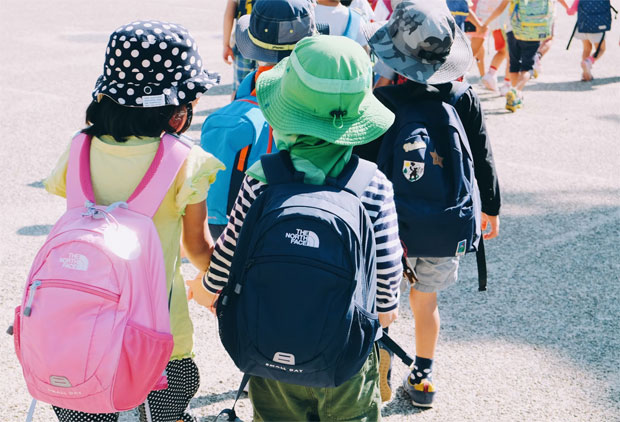How to Make School Trips Comfortable and Memorable for Students

How to Make School Trips Comfortable and Memorable for Students
School trips are an exciting, memorable part of the education experience that can provide a range of different benefits for a child, such as building confidence and promoting independence. As teachers and school staff, we want to ensure students fully enjoy these trips while also keeping their comfort and safety top priorities. There are many elements that go into planning enjoyable, safe school trips, from choosing the right destination to arranging comfortable transportation to packing and effective supervision. Follow these nine tips so your next student trip makes happy memories.
1. Choose Transportation Methods Carefully
One key factor impacting overall trip comfort is transportation. Buses tend to be the default but consider alternatives like a school minibus. School minibus leasing is a great option, providing roomy seating in a smaller vehicle. Minibuses mean fewer students per vehicle, reducing issues with overcrowding, motion sickness, and noise. Drivers can also focus more on individual students. Consider contracting external transportation companies specialising in school minibus leasing rather than relying on standard school buses. If you want transportation ideal for school trips, minibus leasing checks all the boxes.
2. Research Destinations Thoroughly
Destinations are fundamental to an enjoyable trip. Research your options catering specifically to student groups instead of typical tourist attractions. Look for interactive exhibits, hands-on learning opportunities tied to your curriculum and age-appropriate attractions. Contact destinations about specialised educational resources, workshops, or tours for school groups. When possible, make advance trips yourself to evaluate factors like accessibility, dining options, packing requirements and ease of supervision.
3. Have Clear Itineraries
Well in advance, create detailed hour-by-hour itineraries highlighting key educational activities at destinations. Distribute itineraries so chaperones, destinations and transportation companies all align expectations. Build in ample mealtimes so students avoid distraction from hunger/thirst. Have designated meeting points where groups reconvene periodically. Set students’ expectations for balancing structure and independence. Update parents with final itineraries so they can prepare students accordingly.
4. Choose Supervisors Strategically
Handpick staff and parent chaperones best equipped to manage groups of students for extended periods. Have an ideal student-chaperone ratio to prevent groups from getting unruly. Conduct pre-trip meetings to detail supervision duties like staying with assigned groups, enforcing rules, and identifying issues. Encourage supervisors to bring supplemental snacks, games, and comfort resources for unexpected delays. Have procedures if students need medical attention. Select lead chaperones to oversee trip coordination with locations, making adjustments as needed.
5. Have Contingencies for Emergencies
Despite best efforts, glitches happen on trips – so prepare backup plans. Have procedures if issues emerge with transportation, destinations close unexpectedly, or medical attention is required. Keep contact info and insurance details for all students. Prepare information packets for external locations with school/hospital contacts and special needs notifications. Have shortened or alternate itineraries if needed. Keep a first-aid kit on hand, plus contingency supplies like water, non-perishable snacks, and mobile chargers. Assign coordinating staff to address emergencies swiftly.
6. Pack Effectively
Advise students and parents on ideal packing lists – provide suggestions calibrated for your specific trip. Recommend basic comforts like neck pillows, water bottles and snacks, plus weather-appropriate outerwear in backpacks. Have plastic bags for storing wet, dirty, or fragile items. Pack extra layers, allowing for diverse temperatures between destinations and vehicles. Don’t overlook motion sickness remedies if relevant. Remind families of size/weight restrictions and prohibited items that could get confiscated. Share packing best practices well in advance so students remember key items.
Read: Packing for a School Residential Trip | The Ultimate Guide
7. Set Trip Expectations
Students behave best when expectations are established ahead of time. Create group agreements highlighting rules and self-conduct standards for your trip. Foster a culture of personal responsibility, encouraging students to stay with groups and follow instructions. Use orientation meetings to underscore priorities – safety, learning, and creating positive memories. Outline consequences for disregarding rules and procedures for issues. Set social media and mobile phone policies if relevant. The more consistency and accountability you build into trip culture beforehand, the fewer issues you’ll have.
8. Set Clear Behavioural Expectations
An important but often overlooked aspect of planning successful school trips is clearly outlining expected student behaviour and trip rules ahead of time. Set aside time before departure to review behaviour standards, explaining why rules exist and how students can take responsibility. For example, emphasise listening, staying with the group, following supervisor instructions, and keeping voices at respectful volumes when in public places.
9. Help Students Reflect Afterwards
Find ways for students to reflect on trips once back at school, synthesising lessons learned. Have them journal memorable moments, then discuss highlights in groups. Work images, videos, or souvenirs from the trip into projects analysing the destination and subjects studied. Poll students anonymously on what worked well or could improve. Take their feedback into account when arranging future trips. Following up solidifies trips as an impactful educational experience instead of just an extra day off.
Arranging successful student trips means considering many interdependent elements, from transportation, supervision, packing procedures and contingency protocols. Pulling everything together is a process, but the effort pays dividends through memorable learning opportunities.
| Guest Article.





